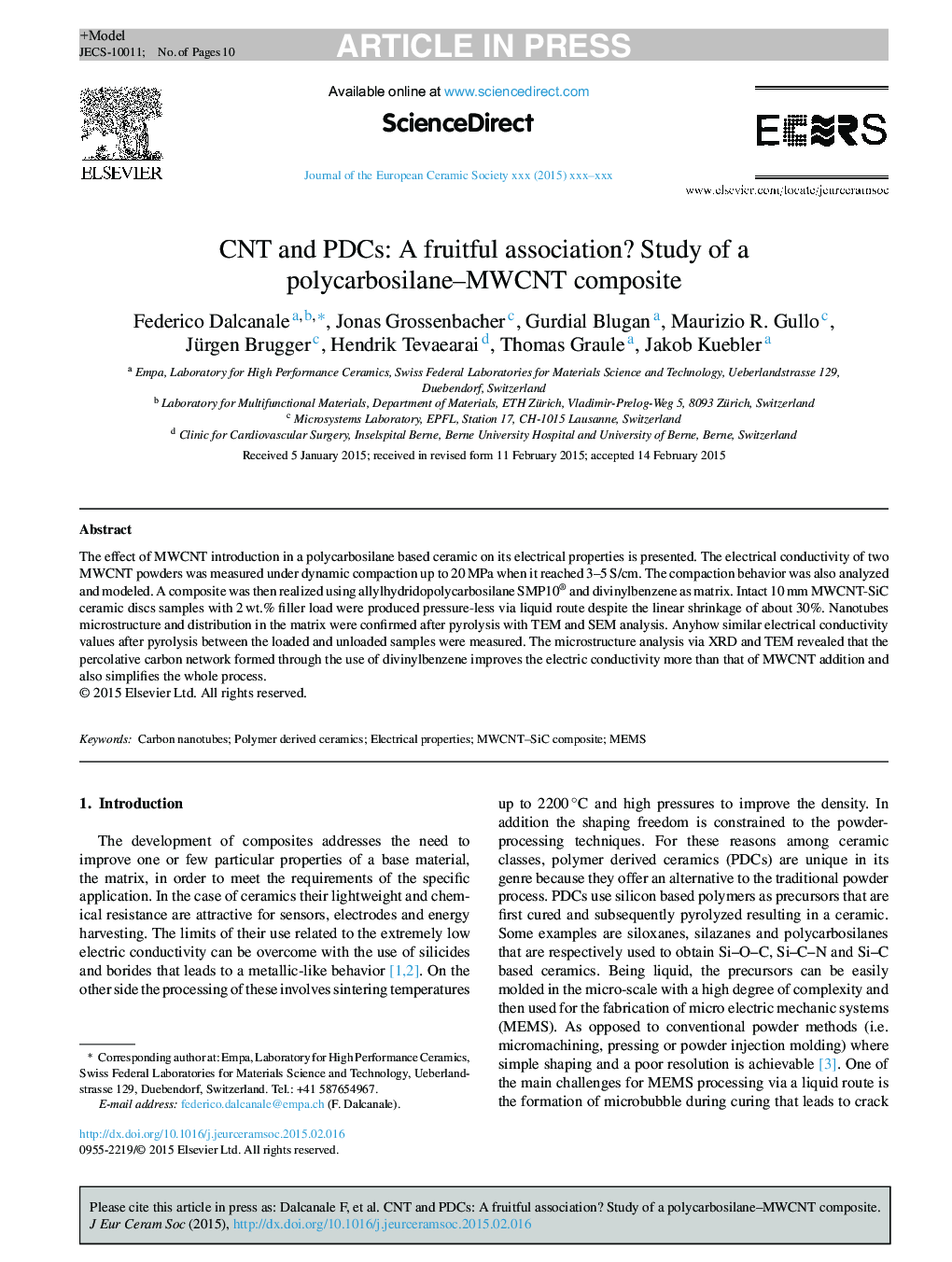| Article ID | Journal | Published Year | Pages | File Type |
|---|---|---|---|---|
| 10629552 | Journal of the European Ceramic Society | 2015 | 10 Pages |
Abstract
The effect of MWCNT introduction in a polycarbosilane based ceramic on its electrical properties is presented. The electrical conductivity of two MWCNT powders was measured under dynamic compaction up to 20Â MPa when it reached 3-5Â S/cm. The compaction behavior was also analyzed and modeled. A composite was then realized using allylhydridopolycarbosilane SMP10® and divinylbenzene as matrix. Intact 10Â mm MWCNT-SiC ceramic discs samples with 2Â wt.% filler load were produced pressure-less via liquid route despite the linear shrinkage of about 30%. Nanotubes microstructure and distribution in the matrix were confirmed after pyrolysis with TEM and SEM analysis. Anyhow similar electrical conductivity values after pyrolysis between the loaded and unloaded samples were measured. The microstructure analysis via XRD and TEM revealed that the percolative carbon network formed through the use of divinylbenzene improves the electric conductivity more than that of MWCNT addition and also simplifies the whole process.
Related Topics
Physical Sciences and Engineering
Materials Science
Ceramics and Composites
Authors
Federico Dalcanale, Jonas Grossenbacher, Gurdial Blugan, Maurizio R. Gullo, Jürgen Brugger, Hendrik Tevaearai, Thomas Graule, Jakob Kuebler,
